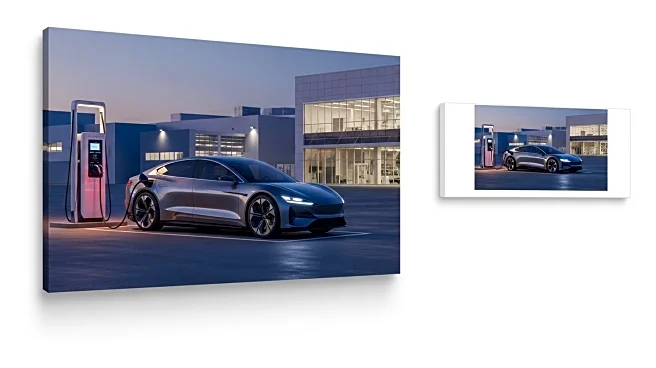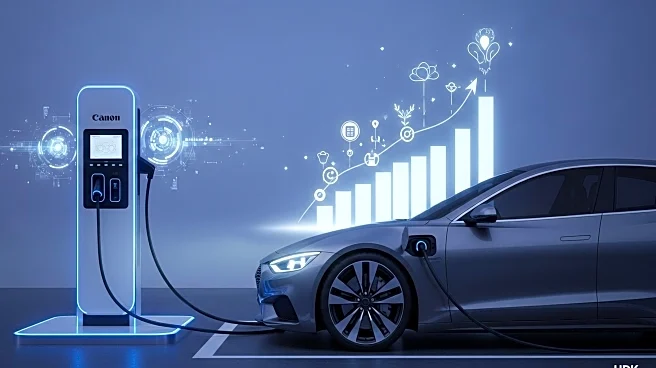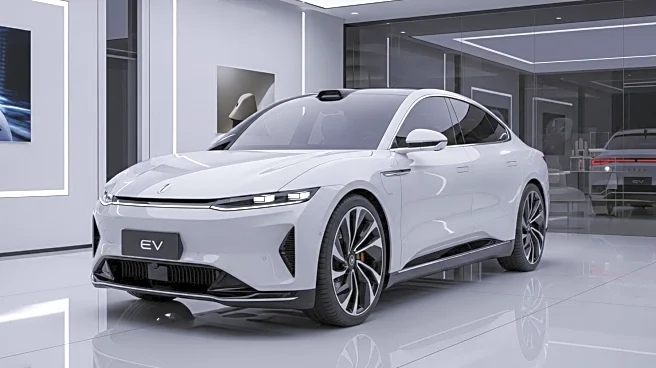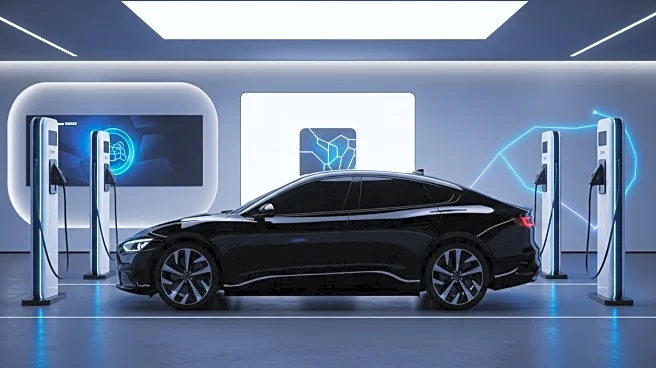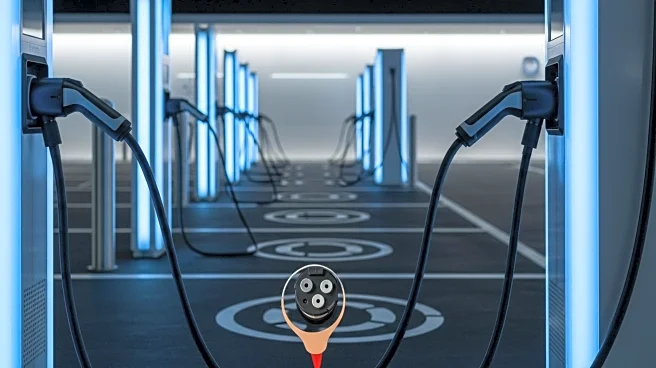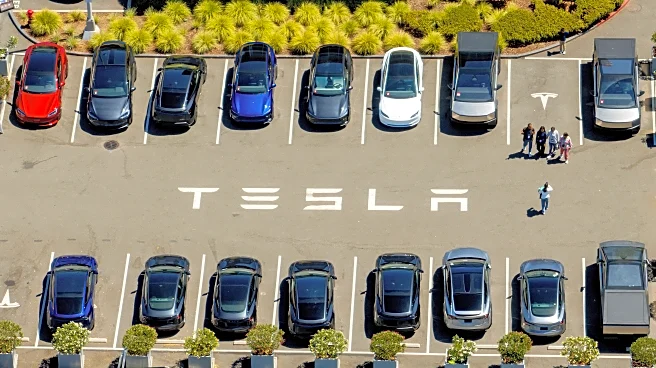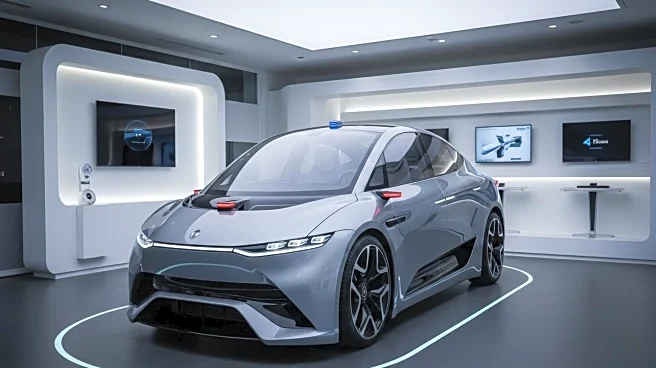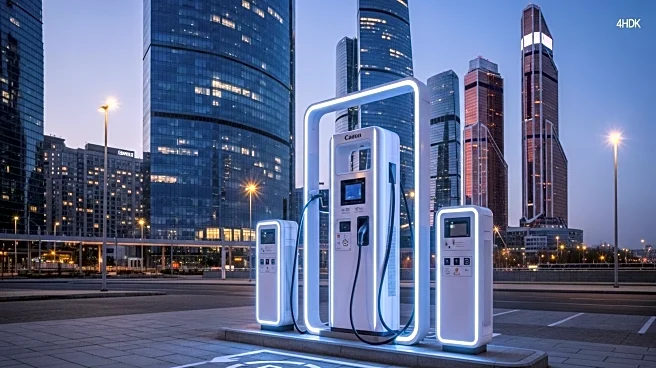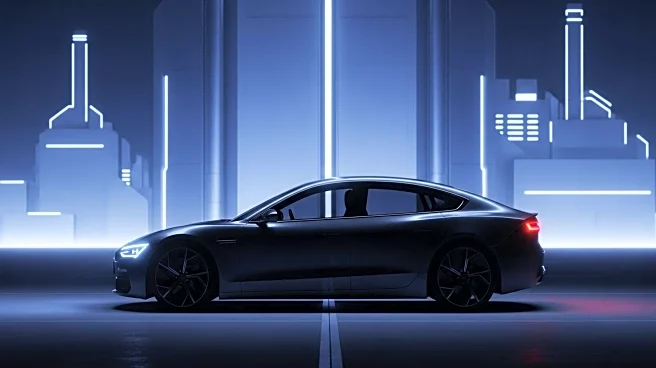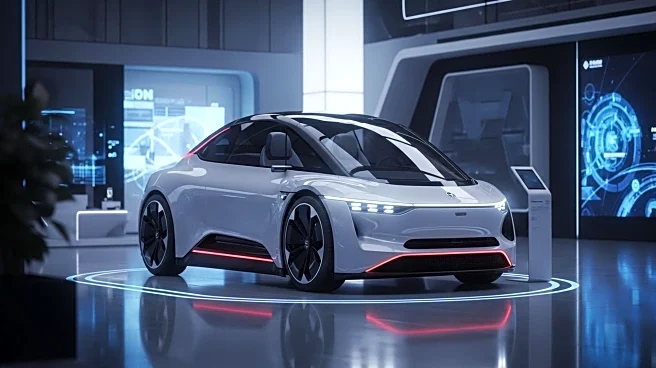What's Happening?
Tesla continues to lead the U.S. electric vehicle (EV) market, holding nearly 50% of sales despite a year-over-year decline. In the second quarter, Tesla accounted for 48.5% of EV sales, with approximately 144,000 units sold. General Motors (GM) is emerging as a strong competitor, increasing its market share to 15.2%, up from 10.8% in the first quarter of 2025. Other automakers like Ford and Hyundai are vying for third place, with market shares of 5.5% and 5.3%, respectively. Premium brands such as Cadillac, BMW, and Rivian follow, each with over 10,000 quarterly sales. The overall U.S. EV sales saw a 6% decline in the second quarter, primarily due to Tesla's reduced sales.
Why It's Important?
The shifting dynamics in the U.S. EV market highlight the growing competition among automakers. Tesla's continued dominance underscores its strong brand presence and consumer loyalty, but GM's rising market share indicates increasing competition. This trend could lead to more innovation and competitive pricing, benefiting consumers. The performance of other brands like Ford and Hyundai suggests potential for further market diversification. The decline in overall EV sales may prompt automakers to reassess strategies to boost demand, impacting production and marketing approaches.
What's Next?
As GM gains traction, it may continue to invest in expanding its EV lineup and production capabilities to challenge Tesla's dominance. Other automakers, including Ford and Hyundai, might intensify efforts to increase their market shares, potentially through new model launches or strategic partnerships. The industry could see increased focus on technological advancements and infrastructure development to support EV growth. Stakeholders will likely monitor these developments closely, anticipating shifts in consumer preferences and regulatory impacts.
Beyond the Headlines
The evolving EV market could have broader implications for environmental policy and energy consumption. Increased competition may accelerate the transition to sustainable transportation, influencing government policies on emissions and renewable energy. The market dynamics could also affect global trade, as automakers source materials and components internationally. Long-term, these changes might reshape the automotive industry, driving innovation and altering traditional business models.
